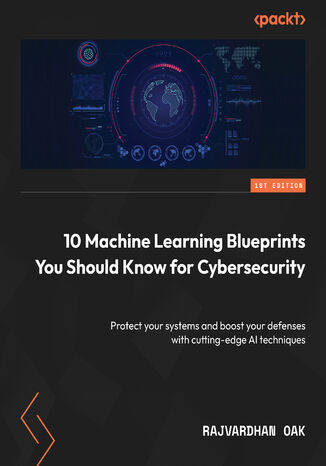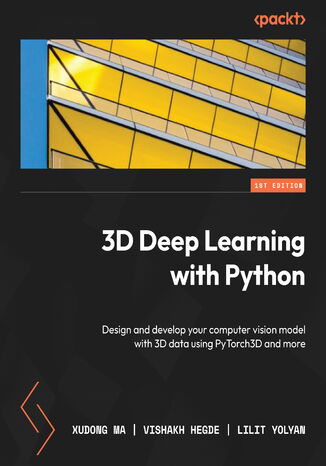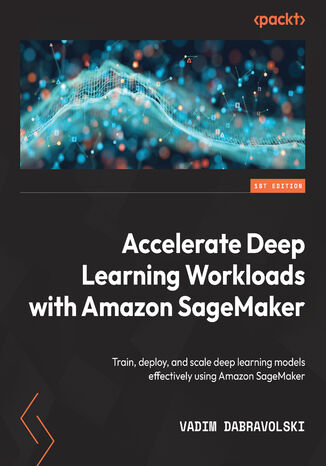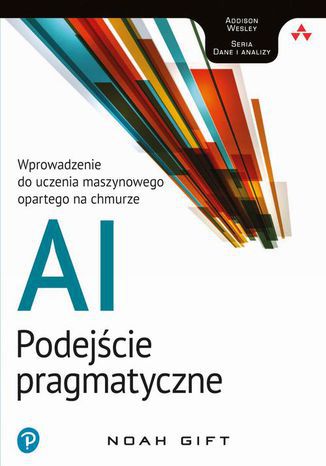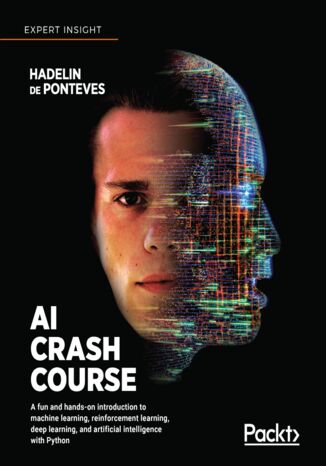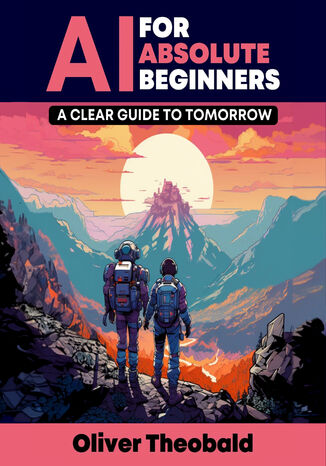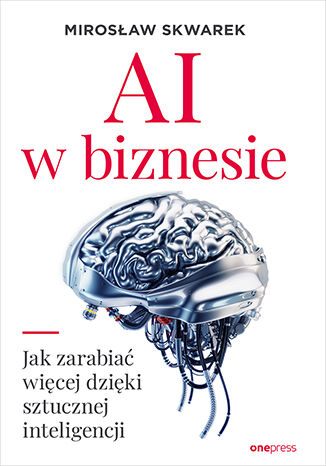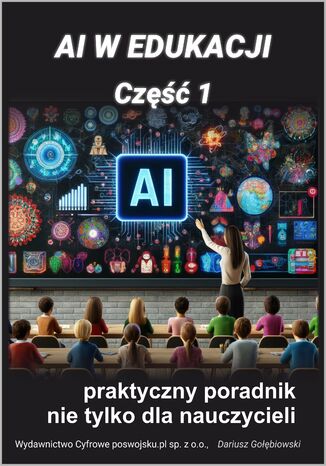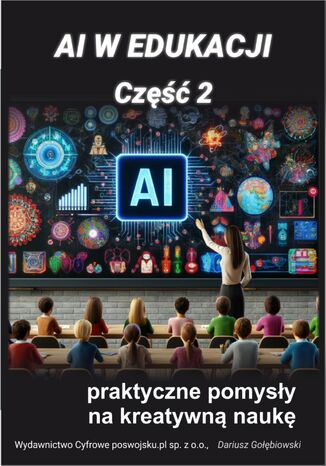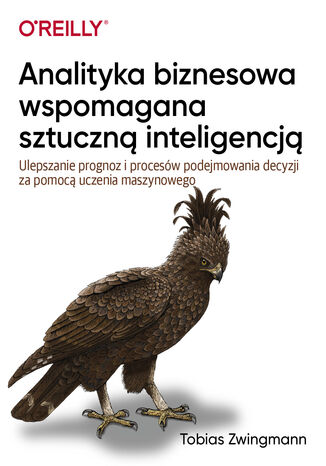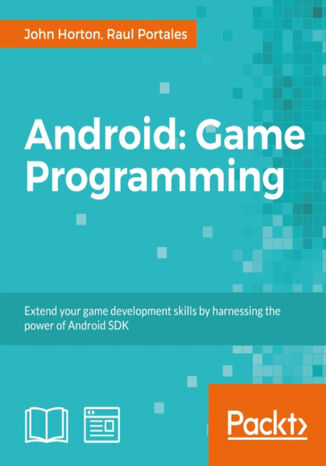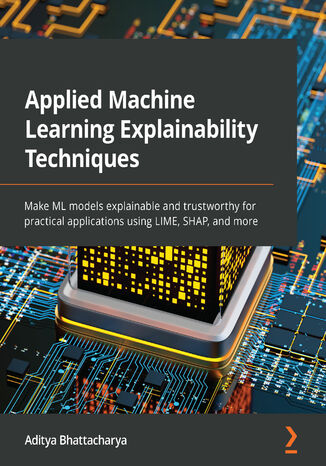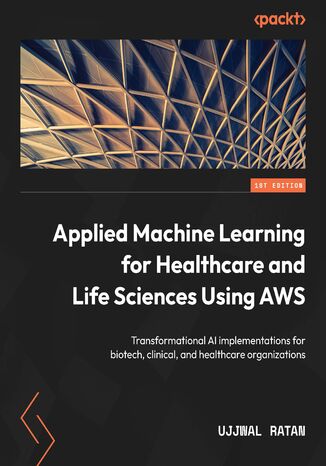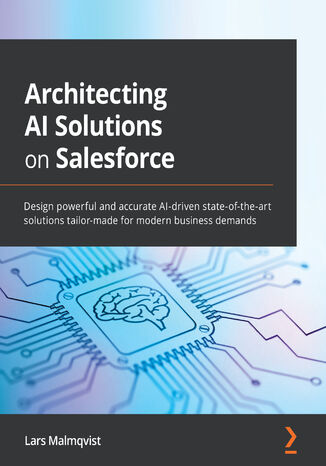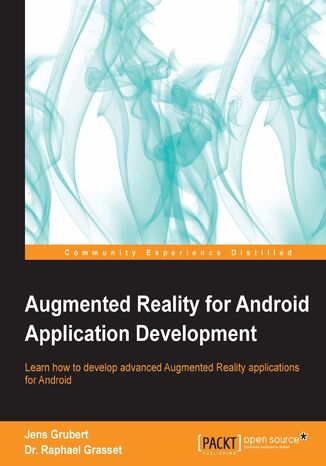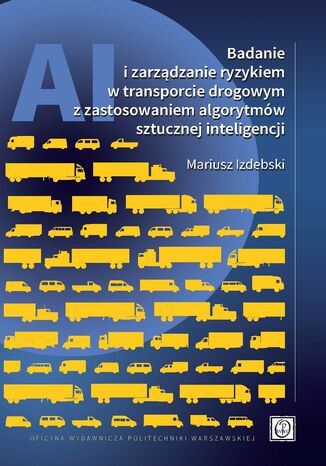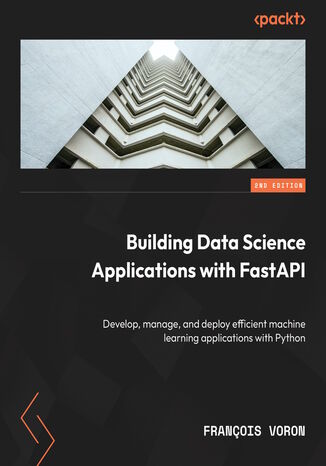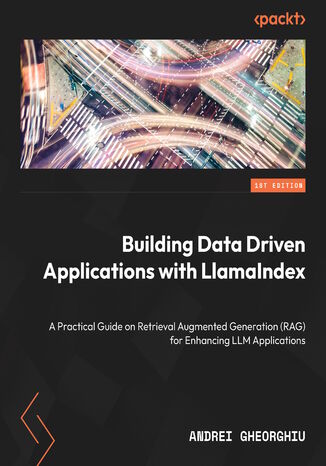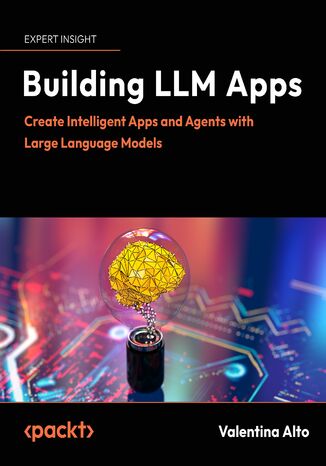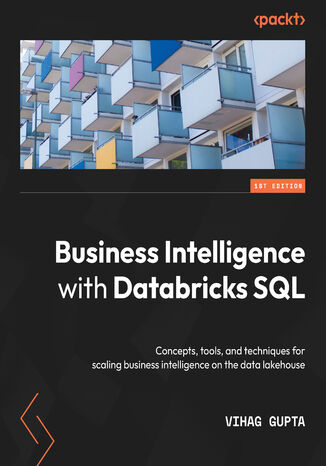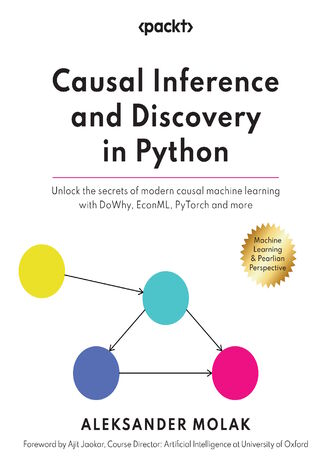Categories
Ebooks
-
Business and economy
- Bitcoin
- Businesswoman
- Coaching
- Controlling
- E-business
- Economy
- Finances
- Stocks and investments
- Personal competence
- Computer in the office
- Communication and negotiation
- Small company
- Marketing
- Motivation
- Multimedia trainings
- Real estate
- Persuasion and NLP
- Taxes
- Social policy
- Guides
- Presentations
- Leadership
- Public Relation
- Reports, analyses
- Secret
- Social Media
- Sales
- Start-up
- Your career
- Management
- Project management
- Human Resources
-
For children
-
For youth
-
Education
-
Encyclopedias, dictionaries
-
E-press
- Architektura i wnętrza
- Biznes i Ekonomia
- Home and garden
- E-business
- Finances
- Personal finance
- Business
- Photography
- Computer science
- HR & Payroll
- Computers, Excel
- Accounts
- Culture and literature
- Scientific and academic
- Environmental protection
- Opinion-forming
- Education
- Taxes
- Travelling
- Psychology
- Religion
- Agriculture
- Book and press market
- Transport and Spedition
- Healthand beauty
-
History
-
Computer science
- Office applications
- Data bases
- Bioinformatics
- IT business
- CAD/CAM
- Digital Lifestyle
- DTP
- Electronics
- Digital photography
- Computer graphics
- Games
- Hacking
- Hardware
- IT w ekonomii
- Scientific software package
- School textbooks
- Computer basics
- Programming
- Mobile programming
- Internet servers
- Computer networks
- Start-up
- Operational systems
- Artificial intelligence
- Technology for children
- Webmastering
-
Other
-
Foreign languages
-
Culture and art
-
School reading books
-
Literature
- Antology
- Ballade
- Biographies and autobiographies
- For adults
- Dramas
- Diaries, memoirs, letters
- Epic, epopee
- Essay
- Fantasy and science fiction
- Feuilletons
- Work of fiction
- Humour and satire
- Other
- Classical
- Crime fiction
- Non-fiction
- Fiction
- Mity i legendy
- Nobelists
- Novellas
- Moral
- Okultyzm i magia
- Short stories
- Memoirs
- Travelling
- Narrative poetry
- Poetry
- Politics
- Popular science
- Novel
- Historical novel
- Prose
- Adventure
- Journalism, publicism
- Reportage novels
- Romans i literatura obyczajowa
- Sensational
- Thriller, Horror
- Interviews and memoirs
-
Natural sciences
-
Social sciences
-
School textbooks
-
Popular science and academic
- Archeology
- Bibliotekoznawstwo
- Cinema studies
- Philology
- Polish philology
- Philosophy
- Finanse i bankowość
- Geography
- Economy
- Trade. World economy
- History and archeology
- History of art and architecture
- Cultural studies
- Linguistics
- Literary studies
- Logistics
- Maths
- Medicine
- Humanities
- Pedagogy
- Educational aids
- Popular science
- Other
- Psychology
- Sociology
- Theatre studies
- Theology
- Economic theories and teachings
- Transport i spedycja
- Physical education
- Zarządzanie i marketing
-
Guides
-
Game guides
-
Professional and specialist guides
-
Law
- Health and Safety
- History
- Road Code. Driving license
- Law studies
- Healthcare
- General. Compendium of knowledge
- Academic textbooks
- Other
- Construction and local law
- Civil law
- Financial law
- Economic law
- Economic and trade law
- Criminal law
- Criminal law. Criminal offenses. Criminology
- International law
- International law
- Health care law
- Educational law
- Tax law
- Labor and social security law
- Public, constitutional and administrative law
- Family and Guardianship Code
- agricultural law
- Social law, labour law
- European Union law
- Industry
- Agricultural and environmental
- Dictionaries and encyclopedia
- Public procurement
- Management
-
Tourist guides and travel
- Africa
- Albums
- Southern America
- North and Central America
- Australia, New Zealand, Oceania
- Austria
- Asia
- Balkans
- Middle East
- Bulgary
- China
- Croatia
- The Czech Republic
- Denmark
- Egipt
- Europe
- France
- Mountains
- Greece
- Spain
- Holand
- Iceland
- Lithuania
- Mapy, Plany miast, Atlasy
- Mini travel guides
- Germany
- Norway
- Active travelling
- Poland
- Portugal
- Other
- Russia
- Romania
- Slovakia
- Slovenia
- Switzerland
- Sweden
- World
- Turkey
- Ukraine
- Hungary
- Great Britain
- Italy
-
Psychology
- Philosophy of life
- Kompetencje psychospołeczne
- Interpersonal communication
- Mindfulness
- General
- Persuasion and NLP
- Academic psychology
- Psychology of soul and mind
- Work psychology
- Relacje i związki
- Parenting and children psychology
- Problem solving
- Intellectual growth
- Secret
- Sexapeal
- Seduction
- Appearance and image
- Philosophy of life
-
Religion
-
Sport, fitness, diets
-
Technology and mechanics
Audiobooks
-
Business and economy
- Bitcoin
- Businesswoman
- Coaching
- Controlling
- E-business
- Economy
- Finances
- Stocks and investments
- Personal competence
- Communication and negotiation
- Small company
- Marketing
- Motivation
- Real estate
- Persuasion and NLP
- Taxes
- Guides
- Presentations
- Leadership
- Public Relation
- Secret
- Social Media
- Sales
- Start-up
- Your career
- Management
- Project management
- Human Resources
-
For children
-
For youth
-
Education
-
Encyclopedias, dictionaries
-
History
-
Computer science
-
Other
-
Foreign languages
-
Culture and art
-
School reading books
-
Literature
- Antology
- Ballade
- Biographies and autobiographies
- For adults
- Dramas
- Diaries, memoirs, letters
- Epic, epopee
- Essay
- Fantasy and science fiction
- Feuilletons
- Work of fiction
- Humour and satire
- Other
- Classical
- Crime fiction
- Non-fiction
- Fiction
- Mity i legendy
- Nobelists
- Novellas
- Moral
- Okultyzm i magia
- Short stories
- Memoirs
- Travelling
- Poetry
- Politics
- Popular science
- Novel
- Historical novel
- Prose
- Adventure
- Journalism, publicism
- Reportage novels
- Romans i literatura obyczajowa
- Sensational
- Thriller, Horror
- Interviews and memoirs
-
Natural sciences
-
Social sciences
-
Popular science and academic
-
Guides
-
Professional and specialist guides
-
Law
-
Tourist guides and travel
-
Psychology
- Philosophy of life
- Interpersonal communication
- Mindfulness
- General
- Persuasion and NLP
- Academic psychology
- Psychology of soul and mind
- Work psychology
- Relacje i związki
- Parenting and children psychology
- Problem solving
- Intellectual growth
- Secret
- Sexapeal
- Seduction
- Appearance and image
- Philosophy of life
-
Religion
-
Sport, fitness, diets
-
Technology and mechanics
Videocourses
-
Data bases
-
Big Data
-
Business and economy
-
Cybersecurity
-
Data Science
-
DevOps
-
For children
-
Electronics
-
Graphics/Video/CAX
-
Games
-
Microsoft Office
-
Development tools
-
Programming
-
Personal growth
-
Computer networks
-
Operational systems
-
Software testing
-
Mobile devices
-
UX/UI
-
Web development
Podcasts
- Ebooks
- Computer science
- Artificial intelligence
Artificial intelligence
Machine learning in security is harder than other domains because of the changing nature and abilities of adversaries, high stakes, and a lack of ground-truth data. This book will prepare machine learning practitioners to effectively handle tasks in the challenging yet exciting cybersecurity space.The book begins by helping you understand how advanced ML algorithms work and shows you practical examples of how they can be applied to security-specific problems with Python – by using open source datasets or instructing you to create your own. In one exercise, you’ll also use GPT 3.5, the secret sauce behind ChatGPT, to generate an artificial dataset of fabricated news. Later, you’ll find out how to apply the expert knowledge and human-in-the-loop decision-making that is necessary in the cybersecurity space. This book is designed to address the lack of proper resources available for individuals interested in transitioning into a data scientist role in cybersecurity. It concludes with case studies, interview questions, and blueprints for four projects that you can use to enhance your portfolio.By the end of this book, you’ll be able to apply machine learning algorithms to detect malware, fake news, deep fakes, and more, along with implementing privacy-preserving machine learning techniques such as differentially private ML.
Xudong Ma, Vishakh Hegde, Lilit Yolyan
With this hands-on guide to 3D deep learning, developers working with 3D computer vision will be able to put their knowledge to work and get up and running in no time.Complete with step-by-step explanations of essential concepts and practical examples, this book lets you explore and gain a thorough understanding of state-of-the-art 3D deep learning. You’ll see how to use PyTorch3D for basic 3D mesh and point cloud data processing, including loading and saving ply and obj files, projecting 3D points into camera coordination using perspective camera models or orthographic camera models, rendering point clouds and meshes to images, and much more. As you implement some of the latest 3D deep learning algorithms, such as differential rendering, Nerf, synsin, and mesh RCNN, you’ll realize how coding for these deep learning models becomes easier using the PyTorch3D library.By the end of this deep learning book, you’ll be ready to implement your own 3D deep learning models confidently.
Over the past 10 years, deep learning has grown from being an academic research field to seeing wide-scale adoption across multiple industries. Deep learning models demonstrate excellent results on a wide range of practical tasks, underpinning emerging fields such as virtual assistants, autonomous driving, and robotics. In this book, you will learn about the practical aspects of designing, building, and optimizing deep learning workloads on Amazon SageMaker. The book also provides end-to-end implementation examples for popular deep-learning tasks, such as computer vision and natural language processing. You will begin by exploring key Amazon SageMaker capabilities in the context of deep learning. Then, you will explore in detail the theoretical and practical aspects of training and hosting your deep learning models on Amazon SageMaker. You will learn how to train and serve deep learning models using popular open-source frameworks and understand the hardware and software options available for you on Amazon SageMaker. The book also covers various optimizations technique to improve the performance and cost characteristics of your deep learning workloads.By the end of this book, you will be fluent in the software and hardware aspects of running deep learning workloads using Amazon SageMaker.
Opanuj skuteczne, gotowe do użycia rozwiązania biznesowe dla sztucznej inteligencji i uczenia maszynowego AI podejście pragmatyczne pomaga rozwiązywać praktyczne problemy przy użyciu nowoczesnego uczenia maszynowego, sztucznej inteligencji i chmurowych narzędzi obliczeniowych. Noah Gift demistyfikuje wszelkie koncepcje i narzędzia potrzebne do osiągnięcia wyników nawet jeśli Czytelnik nie ma solidnego przygotowania z matematyki lub data science. Autor wyjaśnia skuteczne, gotowe do użycia rozwiązania udostępniane przez Amazon, Google i Microsoft oraz demonstruje sprawdzone techniki wykorzystujące ekosystem analizy danych oparty na języku Python. Proponowane podejścia i przykłady pomagają ukierunkować i uprościć każdy krok od wdrożenia po produkcję i budować rozwiązania o niezwykłych możliwościach skalowania. W miarę poznawania działania rozwiązań Machine Language (ML) będziesz uzyskiwać coraz bardziej intuicyjne zrozumienie tego, co można dzięki nim osiągnąć i jak zmaksymalizować ich wartość. Na tych podstawach autor krok po kroku prezentuje budowanie chmurowych aplikacji AI/ML do rozwiązywania realistycznych problemów w dziedzinie marketingu, zarządzania projektami, wyceniania produktów, nieruchomości i dużo więcej. Bez względu na to, czy jesteś profesjonalistą biznesowym, osobą decyzyjną, studentem czy programistą, eksperckie wskazówki autora i rozbudowane analizy przypadków przygotują cię do rozwiązywania problemów data science w niemal dowolnym środowisku. Uzyskaj i skonfiguruj wszystkie potrzebne narzędzia Szybko przejrzyj wszystkie funkcjonalności Pythona, których potrzebujesz do budowania aplikacji uczenia maszynowego Opanuj narzędzia AI i ML oraz cykl życia projektu Korzystaj z narzędzi analitycznych Pythona, takich jak IPython, Pandas, Numpy, Juypter Notebook i Sklearn Dołącz pragmatyczną pętlę zwrotną, która pozwoli nieustannie poprawiać wydajność naszych procedur i systemów Projektuj chmurowe rozwiązania AI oparte na Google Cloud Platform, uwzględniając usługi TPU, Colaboratory i Datalab Definiuj chmurowe przepływy pracy w Amazon Web Services, w tym wystąpienia punktowe, potoki kodu i inne Pracuj z API sztucznej inteligencji w Microsoft Azure Poznaj budowanie sześciu rzeczywistych aplikacji AI od początku do końca
Welcome to the Robot World … and start building intelligent software now!Through his best-selling video courses, Hadelin de Ponteves has taught hundreds of thousands of people to write AI software. Now, for the first time, his hands-on, energetic approach is available as a book. Starting with the basics before easing you into more complicated formulas and notation, AI Crash Course gives you everything you need to build AI systems with reinforcement learning and deep learning. Five full working projects put the ideas into action, showing step-by-step how to build intelligent software using the best and easiest tools for AI programming, including Python, TensorFlow, Keras, and PyTorch.AI Crash Course teaches everyone to build an AI to work in their applications. Once you've read this book, you're only limited by your imagination.
The course begins with an engaging introduction to the world of Artificial Intelligence, making it approachable for absolute beginners. We unravel the mysteries of AI's evolution, from its historical roots to the cutting-edge technologies shaping our future. By explaining complex concepts in simple terms, this course aims to illuminate the path for those curious about how AI impacts our world.The course focuses on the core components of AI, including machine learning, deep learning, and natural language processing, before advancing to more specialized topics like generative AI and computer vision. Each module is designed to build a comprehensive understanding, emphasizing why these technologies are crucial for solving real-world problems and how they're transforming industries.The course wraps up by exploring the ethical considerations and privacy concerns associated with AI, along with a visionary look at the future of work in an AI-driven world. It offers a treasure trove of further resources, ensuring learners have everything they need to continue their exploration of AI.
AI w biznesie. Jak zarabiać więcej dzięki sztucznej inteligencji
Biznesowa rewolucja na miarę internetu. Już tu jest! Pojęcie sztucznej inteligencji (SI, ang. AI) używane jest od lat pięćdziesiątych XX wieku. Jednak dopiero niedawno stało się gorącym, odmienianym przez wszystkie przypadki i możliwości terminem, który działa na wyobraźnię ludzi na całym świecie. Sprawcą zamieszania jest ChatGPT - chatbot opracowany przez firmę OpenIA, który służy do generowania odpowiedzi na dane wprowadzone przez użytkownika. Innymi słowy: super mózg z dostępem do wszystkich zasobów internetu pomyślany tak, by dzielić się nimi z człowiekiem w sposób, jakiego ten człowiek akurat sobie życzy. Możliwości ChataGPT są imponujące. Całą wiedzę, jaką zgromadziliśmy, mamy za jego pośrednictwem na wyciągnięcie ręki, dostępną w kilka sekund. Dysponuje także naszym doświadczeniem i umiejętnościami - zdolnością do researchu, umiejętnościami obliczeniowymi, kreatywnością na poziomie profesjonalnego copywritera. Analizuje i wyciąga wnioski, planuje, tłumaczy zagraniczne teksty, tworzy pisma, odpowiedzi na zapytania, oferty, wpisy na bloga i do mediów społecznościowych. Brzmi jak science fiction? Może. Jednak ChatGPT już tu jest i czeka, aż go zatrudnisz w swojej firmie i pozwolisz mu robić dla Ciebie rzeczy, które zrobić trzeba, a na których zrobienie nie masz czasu, chęci, albo pieniędzy - bo realizację niektórych zadań trzeba byłoby powierzyć zleceniobiorcy. Tymczasem elektroniczny super mózg zrobi je dla Ciebie za darmo. Ta książka podpowie Ci jak namówić Chata GPT, by dla Ciebie pracował. Przedsiębiorca, marketingowiec, edukator oraz autor bestsellerów. Posłuchaj, co o swojej najnowszej książce mówi jej twórca – Mirosław Skwarek ⤵️
AI W EDUKACJI Część 1 Praktyczny poradnik nie tylko dla nauczycieli
"AI w edukacji Część 1 - praktyczny poradnik nie tylko dla nauczycieli" to Twój nowy cyfrowy kompan łączący świat wirtualny z rzeczywistym. Zobacz, jak sztuczna inteligencja może przestać być tylko hasłem z konferencji tech i stać się narzędziem w Twoich rękach. I to niezależnie od tego, czy jesteś nauczycielem, edukatorem, rodzicem, czy po prostu technologicznym entuzjastą. W tym poradniku zabiorę Ciebie w podróż po niesamowitym świecie prawie nieograniczonych możliwości AI. Wspólnie otworzymy drzwi do nieskończonego potencjału cyfrowych narzędzi. Dokonamy demistyfikacji największych mitów i nauczymy się, jak w pełni wykorzystać potencjał AI. Nie będziemy tracić zbyt dużo czasu na suchą teorię. Mój przewodnik to esencja praktycznej wiedzy, która umożliwi Ci wykorzystanie AI w najbardziej twórczy sposób. Niektórych spośród tutaj poruszonych kreatywnych zagadnień, być może nawet dotychczas nie mogłaś/mogłeś sobie nawet wyobrazić. Czy sztuczna inteligencja to już nasza teraźniejszość? W "Części 1" dowiesz się, jak AI zmienia oblicze pracy zawodowej i edukacji, jak można ją wykorzystać do optymalizacji różnorodnych procesów i zaangażowania uczestników w procesie nauki. Nie tylko pokażę Tobie narzędzia, ale także wskażę, jak je stosować, aby przyniosły realne korzyści w codziennym życiu i pracy. W tym poradniku znajdziesz odpowiedzi na pytania, które mogą wydawać się zbyt zaawansowane dla początkujących, ale zarazem są wystarczająco dogłębne dla tych, którzy już stawiają pierwsze kroki w świecie AI. Pobierz "AI w edukacji Część 1" i niech to będzie pierwszy krok w stronę przyszłości, która z każdym dniem staje się coraz bardziej interaktywna, inteligentna i - dzięki AI - nieskończenie ciekawa.
AI w edukacji Część 2 Praktyczne pomysły na kreatywną edukację
AI w edukacji Część 2 Praktyczne pomysły na kreatywną edukację Witajcie w świecie, gdzie Wielki Mag Merlin bez wahania zamieniłby swoją różdżkę na algorytm, a uczniowie rozwiązują równania matematyczne przy pomocy sztucznej inteligencji. "AI W EDUKACJI Część 2 praktyczne pomysły na kreatywną naukę", to poradnik, który może nie nauczy Was kodowania, ale z pewnością pokaże, jak algorytmy sztucznej inteligencji mogą pomagać w nauce. Właśnie tutaj spróbuję zmienić Wasze podejście do nauki. Pomoże AI! Czy zdecydujesz się na szybki update? Zabiorę Was w podróż, gdzie sztuczna inteligencja i nauka tworzą tak naturalne połączenie, że Darwin by się nie powstydził. No, może trochę przesadziłem. Ale tylko nieco. Poznając ten poradnik, mam nadzieję, że poczujecie chemię do chemii, a miętę do mięty :). A fizyka? Oj, poczujecie przyciąganie, bo tutaj grawitacja, to nie tylko spadające jabłka, ale i intrygujące pomysły. Zanurzcie się w geografii, gdzie AI pomoże Wam zwiedzić świat bez wychodzenia z klasy, a na lekcjach języków obcych technologia pokaże ... język i to dosłownie! Ale bez obaw, wszystko może się obyć całkiem kulturalnie. Bo czy zastanawialiście się kiedyś, jak by to było, gdybyście mogli teleportować się w czasie i przestrzeni? Dzięki sztucznej inteligencji, geografia i historia mogą stać się naszymi prywatnymi wehikułami - właśnie: czasu oraz przestrzeni. Możemy eksplorować piramidy bez piasku w butach i przemierzać Wielki Mur Chiński, nie martwiąc się o kondycję. A wszystko to podczas jednej lekcji. Z małą przerwą na herbaciany detoks ;). A gdyby tak Twoi uczniowie mogliby "zobaczyć" dźwięki? Kreatywne pomysły na lekcje muzyki z AI pozwolą im wizualizować harmonię i zobaczyć, jak wygląda piękno symfonii. Może nawet odkryją, że Beethoven czy Chopin mieli swoje własne rodzaje playlist - tylko nieco mniej cyfrowe ;). Inne przedmioty? Proszę bardzo! Zajrzyj w głąb tego poradnika. Zobacz pozostałe propozycje na ciekawe, inspirujące i głęboko wciągające lekcje dla uczniów, ale także i dla wspaniałych nauczycielek oraz nauczycieli. Edukatorzy i edukatorki oraz Ty - szanowna Dyrekcjo! Wzmocnijcie swoje super moce dzięki narzędziom AI, które pomogą zarządzać Waszą klasą oraz nauką: skutecznie, efektownie i efektywnie. A zarządzanie placówką? AI to Wasz nowy, niezawodny doradca biznesowy, a może doradczyni do spraw promocji szkoły? Twój wybór! W każdym razie - na pewno nie poprosi Ciebie o urlop. A do tego zawsze ma czas i niesamowity poziom empatii oraz zrozumienia. Zawsze możesz liczyć na życzliwość w jego (i/lub jej) ... chciałbym powiedzieć - "ustach", ale to byłoby (jeszcze!) zwykłą przesadą. Choć zapewne już niedługo, w niedalekiej przyszłości ... hmm, no wiesz. Roboty, itd. Mam przyjemność przedstawić drugą część poradnika, który, jak zakładam, będzie dla Was inspirującym przewodnikiem po fascynującym świecie AI. Na kolejnych stronach tej książki znajdziesz przykłady zastosowań sztucznej inteligencji w edukacji, choć nie zabraknie także odniesień do innych dziedzin życia. Współczesne technologie AI otwierają przed nami wszystkimi zupełnie nowe, nieznane dotychczas horyzonty kreatywności oraz możliwości dydaktycznych. Większość z nich jeszcze całkiem niedawno byłoby nawet trudnym do pomyślenia. A tym bardziej nie do zastosowania. Moja książka ma na celu nie tylko zainspirować Ciebie do wykorzystywania AI w nauczaniu różnych przedmiotów, ale również dostarczyć konkretne narzędzia i pomysły, jak można to zrobić efektywnie oraz bezpiecznie. Zagłębiając się w treść niniejszego poradnika, znajdziecie praktyczne propozycje zastosowań AI w biologii, chemii, matematyce, fizyce, językach obcych oraz wielu innych dziedzinach edukacji szkolnej. Wszystko po to, aby uatrakcyjnić proces nauczania celem uczynienia go bardziej interaktywnym, zrozumiałym i angażującym dla dzieci oraz młodzieży. W tej części poradnika dużo uwagi poświęcam także ciekawym narzędziom oraz metodologiom, które mogą wspierać nauczycieli w ich codziennej, szkolnej pracy. Spróbuje udowodnić Tobie, że sztuczna inteligencja może być zarówno codziennym pomocnikiem, jak i wielką inspiracją. Efektem Waszej współpracy, powinno być zwiększenie zainteresowania wśród uczniów danym przedmiotem nauczania. Ciekawsze, bardziej kreatywne zajęcia mogą się okazać drogą do lepszego przyswajania szkolnej wiedzy. Nie unikam w tym poradniku także trudnych tematów, jak potencjalne zagrożenia płynące z masowego wdrożenia sztucznej inteligencji, zarówno dla uczniów, nauczycieli, jak i całej społeczności edukacyjnej. Właściwe podejście do zastosowania AI, powinno uwzględniać między innymi kwestie etyczne oraz społeczne. Jest szansa, że właściwe wyważenie pomiędzy korzyściami i zagrożeniami da pozytywny efekt w rozwoju młodego człowieka oraz ludzkiej społeczności. Podsumowując: mam nadzieję, że ten poradnik stanie się dla Was: niezmiernie cennym źródłem fachowej wiedzy oraz pomysłów, które ożywią każdą szkolną lekcję, skuteczną pomocą w przygotowaniu uczniów do życia w świecie przyszłości, gdzie zapewne technologia AI odgrywać będzie kluczową rolę.
AI. Наддержави штучного інтелекту
Кай Фу Лі
Чесно про те, кому загрожує втрата роботи через штучний інтелект та які економічні наслідки тягнуть за собою технологічні прориви. Що буде з людиною, коли штучний інтелект робитиме геть усе? Штучний інтелект змінює світ. Чи буде суперкомпютер правити світом? Що ми можемо зробити для того, щоб не лишитися позаду прогресу?
Wykorzystaj analizy biznesowe i sztuczną inteligencję, aby napędzać rozwój przedsiębiorstwa, podnosić wydajność i ulepszać podejmowanie decyzji biznesowych. Dzięki tej praktycznej książce z rzeczywistymi przykładami wykorzystującymi Power BI można poznać najbardziej odpowiednie przypadki użycia AI w rozwiązaniach BI, w tym ulepszone prognozowanie, zautomatyzowaną klasyfikację i zalecenia wspomagane przez AI. Ponadto nauczysz się, jak wydobywać spostrzeżenia z niestrukturalnych źródeł danych, takich jak dokumenty tekstowe lub pliki obrazów. Tobias Zwingmann pomaga profesjonalistom BI, analitykom biznesowym i specjalistom od danych rozpoznać obszary, w których sztuczna inteligencja ma szczególnie istotny wpływ. Dowiedz się, jak wykorzystać popularne platformy AI jako usługi oraz AutoML, aby tworzyć dowody koncepcji klasy korporacyjnej bez pomocy inżynierów oprogramowania lub danetyków. • Wykorzystaj AI, aby napędzać wpływ na biznes w środowiskach BI • Używaj AutoML do automatycznego klasyfikowania i lepszego prognozowania • Wdrażaj usługi rekomendacji jako pomoc w podejmowaniu decyzji • Wydobywaj spostrzeżenia z wielkoskalowych danych tekstowych za pomocą przetwarzania języka naturalnego • Wyodrębniaj informacje z dokumentów i obrazów, wykorzystując widzenie komputerowe • Buduj interaktywne interfejsy użytkownika dla tablic kontrolnych wspomaganych przez AI • Implementuj kompletne studia przypadków w celu budowania tablic analitycznych zasilanych przez AI „Po 15 latach spędzonych w świecie danych książka ta wywróciła do góry nogami mój ogląd klasycznego rozwiązania BI. Jest doskonale zaprojektowana i skonstruowana. Szkoda, że nie miałem takiej książki dużo wcześniej.” —Kai Aschenbach Szef działu narzędzi BI, HDI Global SE „Analityka biznesowa wspomagana sztuczną inteligencją to książka niezbędna dla każdego, kto chce zrozumieć, jak można usprawnić analizy biznesowe za pomocą AI.” —Ram Kumar Główny specjalista d/s danych i analityki, Cigna Tobias Zwingmann jest doświadczonym danetykiem z solidnymi podstawami biznesowymi. Jest współtwórcą niemieckiego startupu RAPYD.AI, którego misją jest pomoc w adaptowaniu uczenia maszynowego i sztucznej inteligencji przez firmy z szybszym uzyskiwaniem korzyści biznesowych.
Android: Game Programming. A Developer's Guide
Gaming has historically been a strong driver of technology, whether we’re talking about hardware or software performance, the variety of input methods, or graphics support and the Android game platform is no different. Android is a mature, yet still growing, platform that many game developers have embraced as it provides tools, APIs, and services to help bootstrap Android projects and ensure their success, many of which are specially designed to help game developers.Since Android uses one of the most popular programming languages, Java, as the primary language to build apps of all types, you will start this course by first obtaining a solid grasp of the Java language and its foundation APIs. This will improve your chances of succeeding as an Android app developer. We will show you how to get your Android development environment set up and you will soon have your first working game.The course covers all the aspects of game development through various engrossing and insightful game projects. You will learn all about frame-by-frame animations and resource animations using a space shooter game, create beautiful and responsive menus and dialogs, and explore the different options to play sound effects and music in Android. You will also learn the basics of creating a particle system and will see how to use the Leonids library. By the end of the course, you will be able to configure and use Google Play Services on the developer console and port your game to the big screen.This Learning Path combines some of the best that Packt has to offer in one complete, curated package. It includes content from the following Packt products:? Learning Java by Building Android Games by John Horton? Android Game Programming by Example by John Horton? Mastering Android Game Development by Raul Portales
Explainable AI (XAI) is an emerging field that brings artificial intelligence (AI) closer to non-technical end users. XAI makes machine learning (ML) models transparent and trustworthy along with promoting AI adoption for industrial and research use cases.Applied Machine Learning Explainability Techniques comes with a unique blend of industrial and academic research perspectives to help you acquire practical XAI skills. You'll begin by gaining a conceptual understanding of XAI and why it's so important in AI. Next, you'll get the practical experience needed to utilize XAI in AI/ML problem-solving processes using state-of-the-art methods and frameworks. Finally, you'll get the essential guidelines needed to take your XAI journey to the next level and bridge the existing gaps between AI and end users.By the end of this ML book, you'll be equipped with best practices in the AI/ML life cycle and will be able to implement XAI methods and approaches using Python to solve industrial problems, successfully addressing key pain points encountered.
While machine learning is not new, it's only now that we are beginning to uncover its true potential in the healthcare and life sciences industry. The availability of real-world datasets and access to better compute resources have helped researchers invent applications that utilize known AI techniques in every segment of this industry, such as providers, payers, drug discovery, and genomics.This book starts by summarizing the introductory concepts of machine learning and AWS machine learning services. You’ll then go through chapters dedicated to each segment of the healthcare and life sciences industry. Each of these chapters has three key purposes -- First, to introduce each segment of the industry, its challenges, and the applications of machine learning relevant to that segment. Second, to help you get to grips with the features of the services available in the AWS machine learning stack like Amazon SageMaker and Amazon Comprehend Medical. Third, to enable you to apply your new skills to create an ML-driven solution to solve problems particular to that segment. The concluding chapters outline future industry trends and applications.By the end of this book, you’ll be aware of key challenges faced in applying AI to healthcare and life sciences industry and learn how to address those challenges with confidence.
Written for Salesforce architects who want quickly implementable AI solutions for their business challenges, Architecting AI Solutions on Salesforce is a shortcut to understanding Salesforce Einstein’s full capabilities – and using them.To illustrate the full technical benefits of Salesforce’s own AI solutions and components, this book will take you through a case study of a fictional company beginning to adopt AI in its Salesforce ecosystem. As you progress, you'll learn how to configure and extend the out-of-the-box features on various Salesforce clouds, their pros, cons, and limitations. You'll also discover how to extend these features using on- and off-platform choices and how to make the best architectural choices when designing custom solutions. Later, you'll advance to integrating third-party AI services such as the Google Translation API, Microsoft Cognitive Services, and Amazon SageMaker on top of your existing solutions. This isn’t a beginners’ Salesforce book, but a comprehensive overview with practical examples that will also take you through key architectural decisions and trade-offs that may impact the design choices you make.By the end of this book, you'll be able to use Salesforce to design powerful tailor-made solutions for your customers with confidence.
Dr. Raphael Grasset, Jens Grubert
Augmented Reality offers the magical effect of blending the physical world with the virtual world, which brings applications from your screen into your hands. AR redefines advertising and gaming, as well as education. It will soon become a technology that will have to be mastered as a necessity by mobile application developers.Augmented Reality for Android Application Development enables you to implement sensor-based and computer vision-based AR applications on Android devices. You will learn about the theoretical foundations and practical details of implemented AR applications, and you will be provided with hands-on examples that will enable you to quickly develop and deploy novel AR applications on your own.Augmented Reality for Android Application Development will help you learn the basics of developing mobile AR browsers, how to integrate and animate 3D objects easily with the JMonkeyEngine, how to unleash the power of computer vision-based AR using the Vuforia AR SDK, and will teach you about popular interaction metaphors. You will get comprehensive knowledge of how to implement a wide variety of AR apps using hands-on examples.This book will make you aware of how to use the AR engine, Android layout, and overlays, and how to use ARToolkit. Finally, you will be able to apply this knowledge to make a stunning AR application.
Praca dotyczy tematyki zarządzania ryzykiem w transporcie drogowym z wykorzystaniem algorytmów sztucznej inteligencji w procesach przewozowych do minimalizacji zdarzeń niebezpiecznych. Wartością poznawczą przeprowadzonych badań jest opracowanie autorskich, oryginalnych modeli zarządzania ryzykiem w transporcie drogowym wraz z ich algorytmizacją narzędziami sztucznej inteligencji. Opracowane modele zarządzania ryzykiem mogą mieć zastosowanie w różnych obszarach, np. budownictwie. Wykorzystanie algorytmów sztucznej inteligencji w zarządzaniu ryzykiem w transporcie drogowym pozwoliło na opracowanie oryginalnych metod oceny i zarządzania ryzykiem w procesach przewozowych. Do badania redukcji poziomu ryzyka zastosowano dwa zaawansowane algorytmy sztucznej inteligencji - mrówkowy i genetyczny. Sposób ich działania jest różny, co pozwoliło na porównanie jakości generowanych rozwiązań, a tym samym wyznaczenie efektywności tych algorytmów w zarządzaniu ryzykiem w transporcie drogowym. Monografia składa się z dziewięciu rozdziałów, które podzielono na trzy obszary tematyczne. W pierwszym obszarze (rozdz. 1-3) zdefiniowano najnowsze badania z zakresu tematyki ryzyka w transporcie drogowym, scharakteryzowano kluczowe zagrożenia w procesach przewozowych i przedstawiono procedurę zarządzania ryzykiem w transporcie drogowym. Kluczowym elementem tej części monografii jest opis algorytmów sztucznej inteligencji stosowanych w zarządzaniu ryzykiem w transporcie drogowym, ze szczególnym podkreśleniem dużej roli, jaką odgrywają użyte algorytmy. W drugim obszarze (rozdz. 4 i 5) opisano modele zarządzania ryzykiem w transporcie drogowym i przedstawiono ich formalny zapis. W trzecim obszarze (rozdz. 6-8) opisano proces algorytmizacji opracowanych modeli zarządzania ryzykiem wraz ze sposobem szacowania ryzyka na odcinkach sieci transportowej i przedstawiono weryfikację algorytmów zastosowanych w aplikacji do przykładów. W podsumowaniu monografii przedłożono rekomendacje dla decydentów zarządzających ryzykiem w transporcie drogowym, a także podkreślono oryginalność przedstawionych badań i ich dalszy kierunek.
Building Data Science Applications with FastAPI is the go-to resource for creating efficient and dependable data science API backends. This second edition incorporates the latest Python and FastAPI advancements, along with two new AI projects – a real-time object detection system and a text-to-image generation platform using Stable Diffusion. The book starts with the basics of FastAPI and modern Python programming. You'll grasp FastAPI's robust dependency injection system, which facilitates seamless database communication, authentication implementation, and ML model integration. As you progress, you'll learn testing and deployment best practices, guaranteeing high-quality, resilient applications. Throughout the book, you'll build data science applications using FastAPI with the help of projects covering common AI use cases, such as object detection and text-to-image generation. These hands-on experiences will deepen your understanding of using FastAPI in real-world scenarios. By the end of this book, you'll be well equipped to maintain, design, and monitor applications to meet the highest programming standards using FastAPI, empowering you to create fast and reliable data science API backends with ease while keeping up with the latest advancements.
Generative AI, such as Large Language Models (LLMs) possess immense potential. These models simplify problems but have limitations, including contextual memory constraints, prompt size issues, real-time data gaps, and occasional hallucinations.With this book, you’ll go from preparing the environment to gradually adding features and deploying the final project. You’ll gradually progress from fundamental LLM concepts to exploring the features of this framework. Practical examples will guide you through essential steps for personalizing and launching your LlamaIndex projects. Additionally, you’ll overcome LLM limitations, build end-user applications, and acquire skills in ingesting, indexing, querying, and connecting dynamic knowledge bases, covering Generative AI and LLM, as well as LlamaIndex deployment. As you approach the conclusion, you’ll delve into customization, gaining a holistic grasp of LlamaIndex's capabilities and applications.By the end of the book, you’ll be able to resolve challenges in LLMs and build interactive AI-driven applications by applying best practices in prompt engineering and troubleshooting Generative AI projects.
Building LLM Powered Applications. Create intelligent apps and agents with large language models
Building LLM Powered Applications delves into the fundamental concepts, cutting-edge technologies, and practical applications that LLMs offer, ultimately paving the way for the emergence of large foundation models (LFMs) that extend the boundaries of AI capabilities.The book begins with an in-depth introduction to LLMs. We then explore various mainstream architectural frameworks, including both proprietary models (GPT 3.5/4) and open-source models (Falcon LLM), and analyze their unique strengths and differences. Moving ahead, with a focus on the Python-based, lightweight framework called LangChain, we guide you through the process of creating intelligent agents capable of retrieving information from unstructured data and engaging with structured data using LLMs and powerful toolkits. Furthermore, the book ventures into the realm of LFMs, which transcend language modeling to encompass various AI tasks and modalities, such as vision and audio.Whether you are a seasoned AI expert or a newcomer to the field, this book is your roadmap to unlock the full potential of LLMs and forge a new era of intelligent machines.
In this new era of data platform system design, data lakes and data warehouses are giving way to the lakehouse – a new type of data platform system that aims to unify all data analytics into a single platform. Databricks, with its Databricks SQL product suite, is the hottest lakehouse platform out there, harnessing the power of Apache Spark™, Delta Lake, and other innovations to enable data warehousing capabilities on the lakehouse with data lake economics.This book is a comprehensive hands-on guide that helps you explore all the advanced features, use cases, and technology components of Databricks SQL. You’ll start with the lakehouse architecture fundamentals and understand how Databricks SQL fits into it. The book then shows you how to use the platform, from exploring data, executing queries, building reports, and using dashboards through to learning the administrative aspects of the lakehouse – data security, governance, and management of the computational power of the lakehouse. You’ll also delve into the core technology enablers of Databricks SQL – Delta Lake and Photon. Finally, you’ll get hands-on with advanced SQL commands for ingesting data and maintaining the lakehouse.By the end of this book, you’ll have mastered Databricks SQL and be able to deploy and deliver fast, scalable business intelligence on the lakehouse.
Causal methods present unique challenges compared to traditional machine learning and statistics. Learning causality can be challenging, but it offers distinct advantages that elude a purely statistical mindset. Causal Inference and Discovery in Python helps you unlock the potential of causality.You’ll start with basic motivations behind causal thinking and a comprehensive introduction to Pearlian causal concepts, such as structural causal models, interventions, counterfactuals, and more. Each concept is accompanied by a theoretical explanation and a set of practical exercises with Python code.Next, you’ll dive into the world of causal effect estimation, consistently progressing towards modern machine learning methods. Step-by-step, you’ll discover Python causal ecosystem and harness the power of cutting-edge algorithms. You’ll further explore the mechanics of how “causes leave traces” and compare the main families of causal discovery algorithms.The final chapter gives you a broad outlook into the future of causal AI where we examine challenges and opportunities and provide you with a comprehensive list of resources to learn more.
Andy Forbes, Philip Safir, Joseph Kubon, Francisco Fálder
ChatGPT for Salesforce Development is an indispensable guide for Salesforce business analysts, developers, testers, and product owners seeking to integrate ChatGPT into their workflow. This book delves into the intricacies of Salesforce design, configuration, coding, and testing, demonstrating how ChatGPT can simplify complex setups and enhance project team efficiency.With this book, you’ll unlock the effective use of ChatGPT for crafting user stories that align seamlessly with project goals, learn how to design and implement Salesforce flows, and quickly write clear, comprehensive, and high-quality project documentation. As you advance, you’ll leverage ChatGPT to write new Apex code, decipher existing code, and explore the development of web services and callouts. This book spans trigger creation and the development of Lightning Web Components (LWC), highlighting how these can accelerate the development process. Applying ChatGPT's debugging capabilities, you’ll swiftly identify and resolve Salesforce issues to uphold the integrity and performance of your Salesforce applications.By the end of this book, you’ll be adept at integrating ChatGPT at every stage of Salesforce project delivery, from initial configuration to final testing.
Are you ready to unleash the potential of AI-driven cybersecurity? This cookbook takes you on a journey toward enhancing your cybersecurity skills, whether you’re a novice or a seasoned professional. By leveraging cutting-edge generative AI and large language models such as ChatGPT, you'll gain a competitive advantage in the ever-evolving cybersecurity landscape.ChatGPT for Cybersecurity Cookbook shows you how to automate and optimize various cybersecurity tasks, including penetration testing, vulnerability assessments, risk assessment, and threat detection. Each recipe demonstrates step by step how to utilize ChatGPT and the OpenAI API to generate complex commands, write code, and even create complete tools. You’ll discover how AI-powered cybersecurity can revolutionize your approach to security, providing you with new strategies and techniques for tackling challenges. As you progress, you’ll dive into detailed recipes covering attack vector automation, vulnerability scanning, GPT-assisted code analysis, and more. By learning to harness the power of generative AI, you'll not only expand your skillset but also increase your efficiency.By the end of this cybersecurity book, you’ll have the confidence and knowledge you need to stay ahead of the curve, mastering the latest generative AI tools and techniques in cybersecurity.

